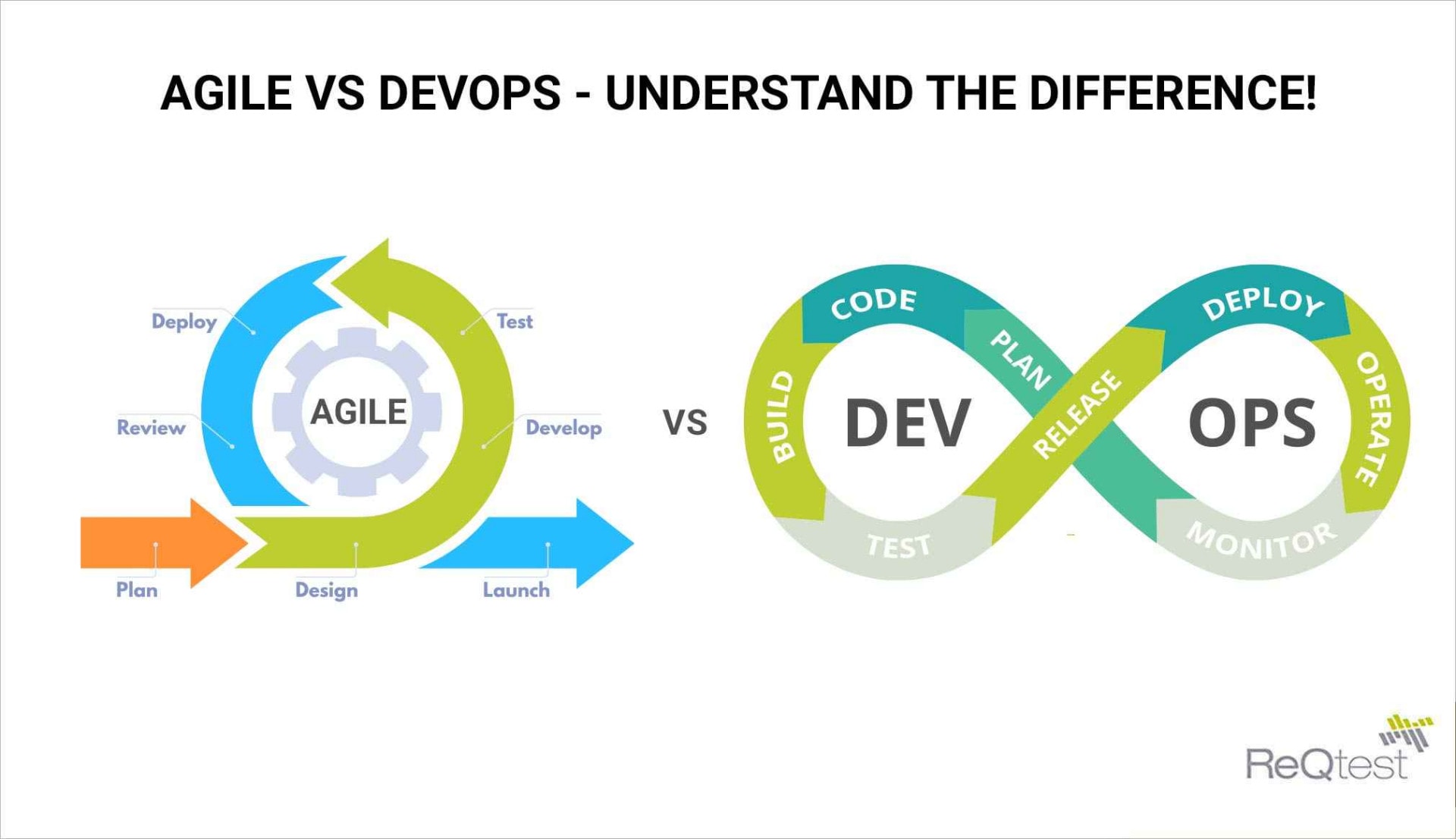July 13, 2020
DevOps vs Agile – Understand The Difference!
DevOps vs Agile – Having a clear understanding of Agile and DevOps will allow you to understand their differences. They are both software development practices that share a similar end goal. Agile has a longer-standing history, whereas DevOps is fairly new. The methodology for both is: how do we reach the goal in the fastest way possible?
We need to understand the inner workings of each of these methodologies. In the article, we’ll have a look at both Agile and DevOps and then discuss their key differences of DevOps vs Agile.
What Is Agile?
First, let’s explain where the agile methodology stems from. This approach aims to establish more intelligent ways of developing software, and in so doing, assisting others.
The four values of the Agile Manifesto are:
- Individuals and interactions over processes and tools
- Working software over comprehensive documentation
- Customer collaboration over contract negotiation
- Responding to change over following a plan
These four values helped shape the agile software development philosophy. In a general sense, agile motivates acquisition, with leaders that are driven by teamwork and responsibility.
An important aspect of the agile perspective is a specific focus on regularly positioning growth with trends and the needs of the customer.
Agile methodology is comfortable with the unknown and is quite content with responding to change as changes occur. Instead of planning, the agile approach takes the route of being engaged throughout the necessary process. Instead of shying away from change or pretending like it’s not part of the inevitable, agile methodology considers change as a necessary counterpart to address the needs of customers.
The customer in the agile approach is there from the beginning. They are an integral part of establishing the desired criteria.
Teamwork is also an essential part of the agile methodology. This involves the development teams, testers, and project managers. Roles are assigned and the team agrees to this as a whole.
What Is DevOps?
The primary foundation of DevOps is a method that at its core, focusses on collaborating and homogenizing the communication of IT professionals. This allows for products to be distributed in the most timeous manner possible.
At the heart of the DevOps culture is the partnership between Development and Operations teams. The collaboration of these teams enables code deployment and production to take place in a more rapid and automated fashion. It’s important to remember that previously these teams operated in silos from the initial to completion stages.
In an organization, DevOps should not be seen as a title but rather as a responsibility that they undertake, which allows for a smoother flow of processes.
Three ways define the principles of DevOps. These are:
- Principles of flow
- Principles of feedback
- Principles of continuous learning
The above three principles focus on how to fast track how work can flow during every stage of the process. It looks at the regularity and speed of feedback that is consistent throughout the cycle of development. There needs to be continuous learning and analysis as an entrenched part of an organization.
The mindset of DevOps requires the inclusion of a shared culture and flexibility. It is centered around IT and software development.
The performance of software delivery plays an important role because it affects the mission of the organization, profit margins, and customer satisfaction. Organizational culture is an important aspect because this ultimately affects performance. As an organization, how well do you understand this and how important is it to you?
Agile vs DevOps – Key Differences
An agile team is usually smaller in size, for collaboration and quicker reaction time. This caters to the rapid changes in customer behavior or needs. It is, however, the opposite for a DevOps team who are larger and who focus on quicker release times.
Agile methodology sees individuals as responsible for different roles throughout the process. In DevOps, they are accountable for everything. When it comes to targets, agile looks at software development and DevOps looks at providing sequential business solutions at a rapid pace.
The reduplication method linked to agile looks at prompt releases, feedback, and relationship building. DevOps brings all these teams together.
Agile is more well known for lean-approach. For DevOps, it’s more about reducing costs. An agile approach is also geared for fluctuating change and DevOps places emphasis on regular testing and delivery.
The agile approach works in sprints, which can have durations ranging from a week to about a month. This is how teams manage their development schedule. On the other hand, DevOps emphasizes may have released several times a day.
Current business models, therefore, may require agile to move past a work environment that is static in comparison to DevOps where teams have to work together. There are distinct differences between both but be careful to not merely be an adopter of only one. They both harness the importance of collaboration and teamwork.
Organizations and development teams can utilize both to complement the other. At the end of the day, the needs of the user always need to be top of mind. Both of these approaches consider this and are flexible so that they can easily adjust to changes in requirements.
Final Thoughts
Agile methodology and DevOps are different from one another. But through their similarities, it could lead to thinking that they are the same. What makes them meaningful is that they can coexist. After all, they both want to bring value to the end-user – the customer.
Share article
